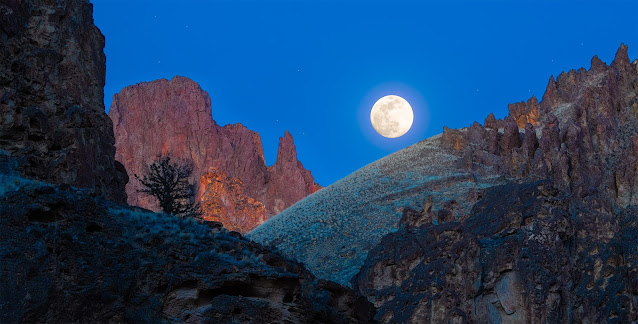on wild horses
when i first moved to this area i learned about wild horse herds scattered around the region. the idea of wild horses stimulated images of the wild west and this land before settlers. first experiences were in the murderer's creek area of aldrich mountain. forested rugged terrain made tracking and finding these horses challenging and very rewarding with the first photos. they seemed quite wild to me.
 |
| murderer's creek herd |
 |
| stud and family |
as treks expanded south into the steens mountains and alvord desert, seeing these horses became more frequent. i got to know them better.
after posting some of the first photos online, i received a comment explaining how true wild horses went extinct thousands of years ago and that they were actually feral - domestic horses set loose in the backcountry.
after a little research, my romantic image of wild horses began to dissolve. this, combined with seeing them on almost every photo trek, led me to understand they aren't truly wild. they are managed.
it depends a lot on how we define the term wild.
certainly they are wild compared to domestic horses in corrals, pastures and barns. and they are tough, strong and survivors. they have to be to live in the harsh extremes of this barren landscape.
they are also monitored and managed by the bureau of land management (blm) along with various federal and state agencies. from the blm website:
The BLM manages free-roaming wild horses and burros on public lands as part of its multiple-use mission, with the goal of supporting healthy wild horses and burros on healthy public rangelands. The BLM is responsible for determining and maintaining appropriate management levels (AML) for each herd and works to achieve that population target through a variety of management processes, including limiting reproduction in some herds through the use of birth control and gathers that remove excess animals from the range.
this is a controversial topic with passionate voices from several sides of the issue. i'm not supporting one view or another. i do see how large herds are very hard on the land, plants and water sources, which affects other wildlife. i also see the value of something wild in a world and landscape that is becoming increasingly cultivated and managed.
the point of this post is wild vs. managed. it's been a reality check for me, wandering this huge area with an image of wild, and finding it mostly managed. a little disappointing. and not just with horses.
i'm finding the same story with wilderness areas, same dynamic. yes, wilderness areas may be more wild than other public or private lands. and... they, too, are managed. maybe the wilderness in deep alaska is actually wild, maybe not.
then, there are the wild and scenic rivers. same story.
so, it seems to come down to our definition of wild. i had an image of what wild meant before i moved here. over time, with repeated treks into the backcountry, i've learned what the reality of our land and wildlife means.
i actually prefer reality, even if it means recognizing and loosening up on a romantic image or the way i think it should be.
 | ||
| wild mare and colt |
i still use the term wild in photo titles and posts about these horses, partly because that is the common, although maybe not absolute technically correct phrase. somehow feral mare and colt, or managed mare and colt or free-roaming mare and colt don't quite express the spirit of these creatures. that is my priority with these photos: honor and respect this land and wildlife, expressing their spirit and energy, and in some way their wildness. in doing so, we may recognize that we, too, have wildness within us, even with the cultivated, managed and domesticated parts of our lives.
it seems important to find a natural balance of all these aspects in the landscape, wildlife and ourselves.



Comments
Post a Comment